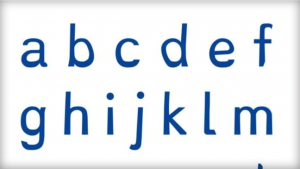Fonts That Help You Read: Fact or Fiction?
Could something as simple as a font change help people read?
Around 10% of the world’s people have dyslexia, a developmental reading disorder that impairs a person’s ability to read and write. There is evidence that the font of the text has a significant effect on a text’s accessibility for people with dyslexia (Rello, L., & Baeza-Yates, R., 2013). The search for a way to make reading easier for dyslectics lead to the creation of a new type font: Dyslexie. The font Dyslexie was developed especially for dyslectics so that the differences between each character is bigger, easier to recognize, and less likely to be confused with another (Shallow, 2014).
How it works
The Dyslexie font comes with some interesting modifications to letters.
 Letters now have what is called a heavy bottom. Dyslexie acknowledges that letters can be viewed as 3D objects. If letters are 3D objects, then gravity applies. Dyslexie “weighs down” the bottom of each letter by making the bottom section bolder, preventing it from tipping upside down.
Letters now have what is called a heavy bottom. Dyslexie acknowledges that letters can be viewed as 3D objects. If letters are 3D objects, then gravity applies. Dyslexie “weighs down” the bottom of each letter by making the bottom section bolder, preventing it from tipping upside down.
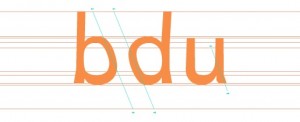 There are also new slanted parts to the letters. This means that characters which look quite similar have been adapted by changing the tails, to reduce the similarity and avoid the problem of mirror letters.
There are also new slanted parts to the letters. This means that characters which look quite similar have been adapted by changing the tails, to reduce the similarity and avoid the problem of mirror letters.
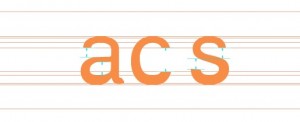 Openings in letters that have them are bigger. Supposedly, these airier letters are more distinctive, so it is easier to see them as unique.
Openings in letters that have them are bigger. Supposedly, these airier letters are more distinctive, so it is easier to see them as unique.
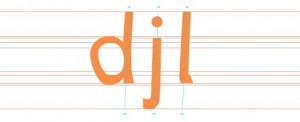 By slanting the letters, it prevents them from flipping sides and instead weights them toward one side, so that a lowercase B and D would get less easily confused.
By slanting the letters, it prevents them from flipping sides and instead weights them toward one side, so that a lowercase B and D would get less easily confused.
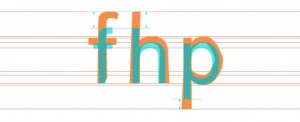 There is also a longer ascender and descender in Dyslexie. Lengthening the ascender and descender of the letters allows the differences of individual letters to be emphasized.
There is also a longer ascender and descender in Dyslexie. Lengthening the ascender and descender of the letters allows the differences of individual letters to be emphasized.
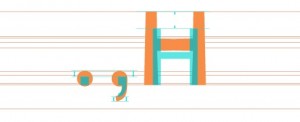 Larger and bolder capital letters and punctuation marks, help prevent sentences from running together.
Larger and bolder capital letters and punctuation marks, help prevent sentences from running together.
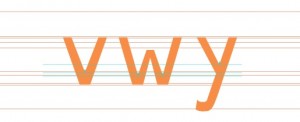 Creating different heights of letters that are usually twins now have unique features so that they no longer resemble each other entirely. Here, the inner corners of the letters appear at different heights and angles.
Creating different heights of letters that are usually twins now have unique features so that they no longer resemble each other entirely. Here, the inner corners of the letters appear at different heights and angles.
 The space of the letters is expanded with a higher X-axis, making the characters more distinct.
The space of the letters is expanded with a higher X-axis, making the characters more distinct.
 Dyslexie has larger spacing between letters, with the idea that it makes them less likely to become jumbled together and are more clear to read.
Dyslexie has larger spacing between letters, with the idea that it makes them less likely to become jumbled together and are more clear to read.
Results
Through these many modifications to the proportions, sizing, and spacing of letters, Dyslexie aims to help people with dyslexia read more fluently with higher comprehension (Boer, n.d.). But does it really achieve these goals? Some scientists who study dyslexia have wondered if the type font actually helps and have performed experiments on the subject.
The conclusion of one study was that reading with the font Dyslexie doesn’t lead to an increase in reading speed. There was however a decrease in the reading errors when dyslectics read words in the Dyslexie font (Leeuw, 2010). This study just indicates a decrease in general reading errors, but what specific kind of errors were made?
Another study used eye-tracking to measure the effect of font type on reading speed. It found that Sans serif, monospaced and roman font styles significantly improved the reading performance over serif, proportional and italic fonts (Rello, L., & Baeza-Yates, R., 2013). This study’s findings go directly against some of the core ideas behind the Dyslexie font. Slanting letters would have similar effects as italics, and changing the lengths and sizes of certain parts of the letters makes them disproportionate.
When asked if the new dyslexia font helped, some dyslexic students shared (Burgess, 2012) :
“It helped at first. I really liked it. I didn’t have to focus as much as with the regular font. The reading was easier. But after a while, the new font got actually annoying for me because I noticed the darker bottoms and I was really glad to go back to the regular reading.”
“My eyes didn’t wander away or got distracted as easily as with the regular font.”
“It really didn’t help me because I am a good reader. Maybe it is more helpful for someone who struggles with reading. Not every dyslexic is the same.”
When asked whether the OpenDyslexic font prevented their brain from turning the letters, the younger students unanimously said that it did help “a little bit”. Others said, “No, not really.”
The older students commented that because of having learned to read with the “Help” method, they didn’t struggle with turning letters anymore, just with skipping words or lines at times. “We struggle with new and complicated words just as much as other non-dyslexic students do. Besides, dyslexia is not just about reading, it is about how our brain works and how we think.”
 Not all dyslexics have the same cognitive impairments when it comes to reading. There are lots of different routes and paths towards understanding written words. Some can be damaged and others can be spared. The Dyslexie font can help improve some problems for a portion of the dyslexic population, but it also creates some new cognitive difficulties.
Not all dyslexics have the same cognitive impairments when it comes to reading. There are lots of different routes and paths towards understanding written words. Some can be damaged and others can be spared. The Dyslexie font can help improve some problems for a portion of the dyslexic population, but it also creates some new cognitive difficulties.
References
Boer, C. (n.d.). Dyslexie Font: The dyslexia font which eases the reading. Retrieved from http://www.dyslexiefont.com/en/
Burgess, T. (2012, October 7). OpenDyslexic: ‘Does the new dyslexia font help?’ Review by teacher and students. Retrieved from http://www.examiner.com/article/opendyslexic-does-the-new-dyslexia-font-help-review-by-teacher-and-students
Leeuw, R. (2010). Special font for dyslexia?.
Rello, L., & Baeza-Yates, R. (2013, October). Good fonts for dyslexia. InProceedings of the 15th International ACM SIGACCESS Conference on Computers and Accessibility (p. 14). ACM.
Shallow, P. (2014, November 11). The font that could help dyslexics read better. Retrieved from http://www.cbsnews.com/news/the-font-that-helps-dyslexics-read-better/
